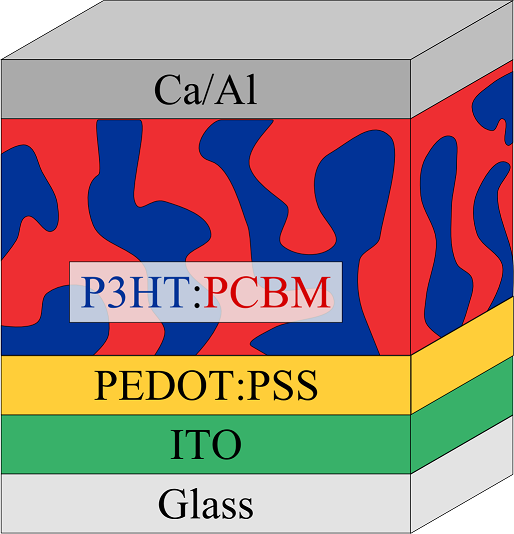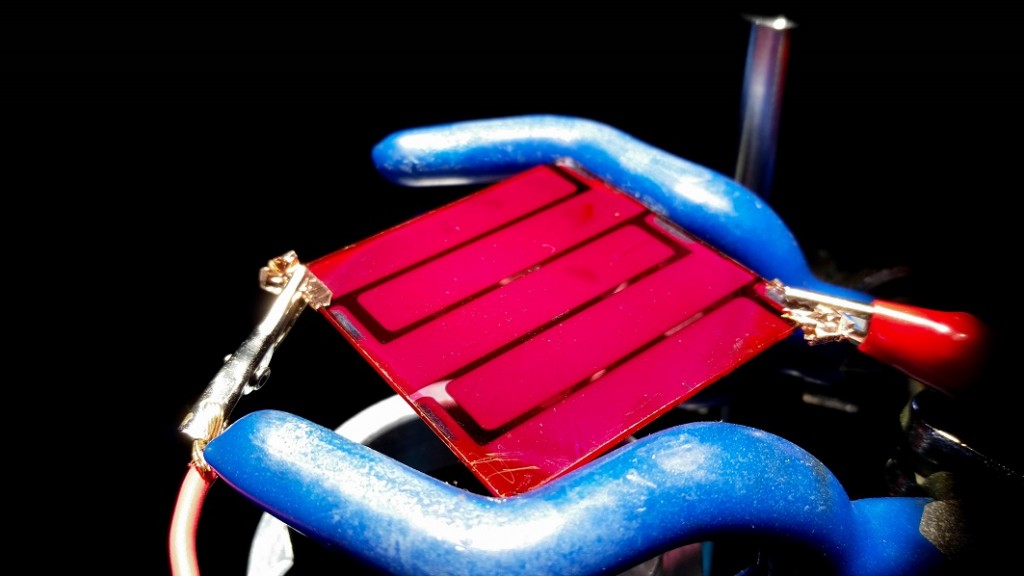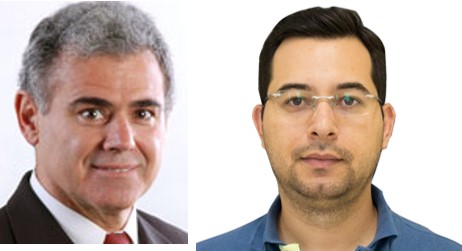[Paper: Influence of charge carriers mobility and lifetime on the performance of bulk heterojunction organic solar cells. D.J. Coutinho, G.C. Faria, D.T. Balogh, R.M. Faria. Solar Energy Materials and Solar Cells, Volume 143, Pages 503-509 (December 2015). DOI:10.1016/j.solmat.2015.07.047]
Analytical contribution to sustainable energy
A scientific study entirely conducted at the São Carlos Institute of Physics from the University of São Paulo (IFSC-USP) has made significant contribution to the assessment of performance of organic solar cells, devices that are able to produce electricity from sunlight – a renewable, clean, safe and practically inexhaustible source of energy. The results of this piece of research were recently published on the journal Solar Energy Materials & Solar Cells, which has an impact factor of 5.337.

With a structure comparable to a sandwich, the organic solar cell is comprised of layers of nanometric thickness, made of several materials that execute specific functions in the device.
The so-called “active layer”, the one responsible for the main stages of transforming light (flow of photons) into electric current (flow of electrically charged particles), is made of semiconducting organic materials (whose molecules have carbon atoms). In the electronic band structure of traditional semiconductors, electrons located in the so-called “valence band” jump from their state when they absorb photons, leaving vacant spaces, or holes, and occupying new places in the so-called “conduction band”. In organic semiconductors, the mechanism that produces the electron-hole pairs is similar, with the difference that, instead of a direct transition from one band to the other, there is a molecular exciton (a system containing one negative charge, and one positive charge), which is easily dissociated, producing free charges (electrons and holes).
For the next stage in the conversion of light into electricity to occur, the active layer of the organic solar cells must have many interface regions between two types of materials: the donor and the acceptor of electrons (usually an electronic polymer and a fullerene derivative, respectively). If the exciton, in its few picoseconds of existence, manages to reach an interface region, the forces keeping the electron and the hole together are broken, so the donation of the electron from the polymer to the fullerene happens. At this moment, if no traps are on the way to prevent their movement, electrons and holes flow in opposite directions, attracted and collected by electrode elements, producing an electric current that can be used in an external circuit.
In this succession of stages, efficiency losses in the conversion of solar energy into electrical energy may happen due to several factors. One example is the recombination of electrons and holes after the dissociation of the exciton, which prevents these charge carriers to flow freely. Other examples include defects or impurities in active layer materials, which act as traps for the charge carriers, decreasing their mobility.
The paper published on Solar Energy Materials and Solar Cells reports the results of a series of experiments conducted for the purpose of studying, in detail, the mobility and lifetime of charge carriers (electrons and holes), as a function of temperature, in a bulk-heterojunction organic solar cell produced at IFSC. In this kind of device, the electron donor and acceptor materials coexist in a particular configuration (a nanometric film with a dual-phase structure) that increases the interface area between the two, compared to other possible configurations.
The authors also presented in the paper the results of electric current measurements, based on external applied voltage (J-V) under lighting – one of the most relevant experiments in the characterization of solar cells. In fact, this experiment is necessary for assessing the efficiency of a solar cell.

In order to adjust and analyze the experimental results, the authors developed a model, based on a set of equations. This model filled a gap in the scientific literature as, up to its release, these analyses were made from approximations, being inaccurate, or using numerical methods, which require hard time-consuming work.
“To this day, there is no formal description of the J-V curve”, says Roberto Mendonça Faria, full professor at IFSC-USP and corresponding author of the paper. “Our research had the merit of developing a J-V analytical expression, which successfully reproduces the characteristics of an organic solar cell in the event the positive and negative carriers have equal mobility”, he points out. With this expression, he adds, it is possible to carry out a more precise assessment of the cells performance, even for cases in which the electrons and holes do not have the exact same mobility.

The paper also features all the analyses the team managed to do from the experimental results and the model, mainly in regard to some factors leading to efficiency loss in the conversion of light into electricity.
This way, the authors of the paper made a contribution to the challenge of producing sustainable energy. “Energy production is crucial for humanity to keep its economic and social development, but it cannot go on with its terrible side effects, polluting the planet and contributing to global warming”, says Faria.
The results reported in the paper comprise the Master’s and Doctoral studies of Douglas José Coutinho, advised by Professor Faria and financed by Brazilian research funding agencies, FAPESP (São Paulo Research Foundation) and CNPq (National Council for Scientific and Technological Development), including through the CNPq National Institute of Science and Technology for Organic Electronics (INEO).
